This AP Microeconomics cheat sheet provides a clear summary of crucial concepts, including supply and demand, elasticity, market structures, and resource allocation. It’s designed to help students master key topics efficiently.
Free AP Microeconomics Practice Test

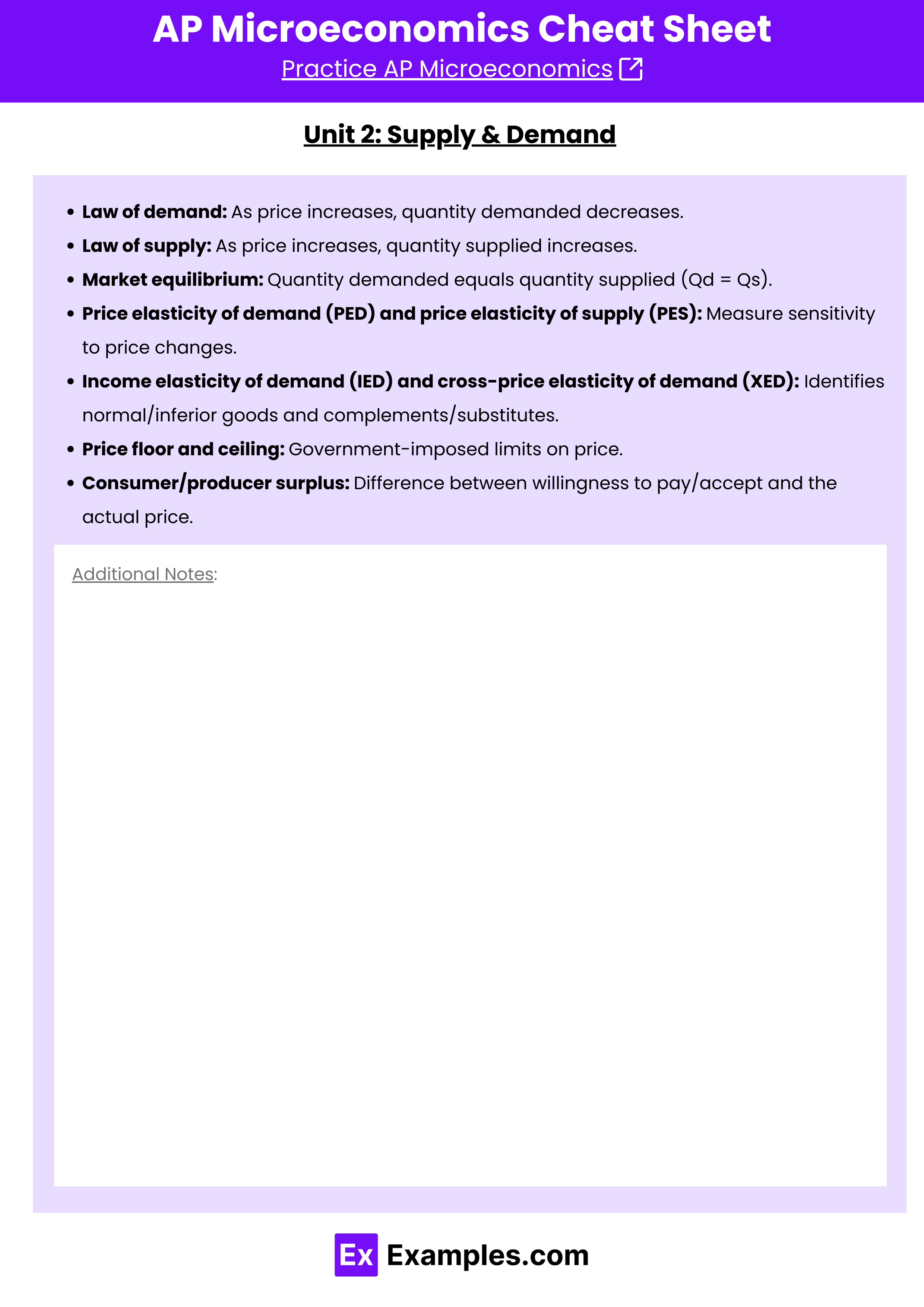
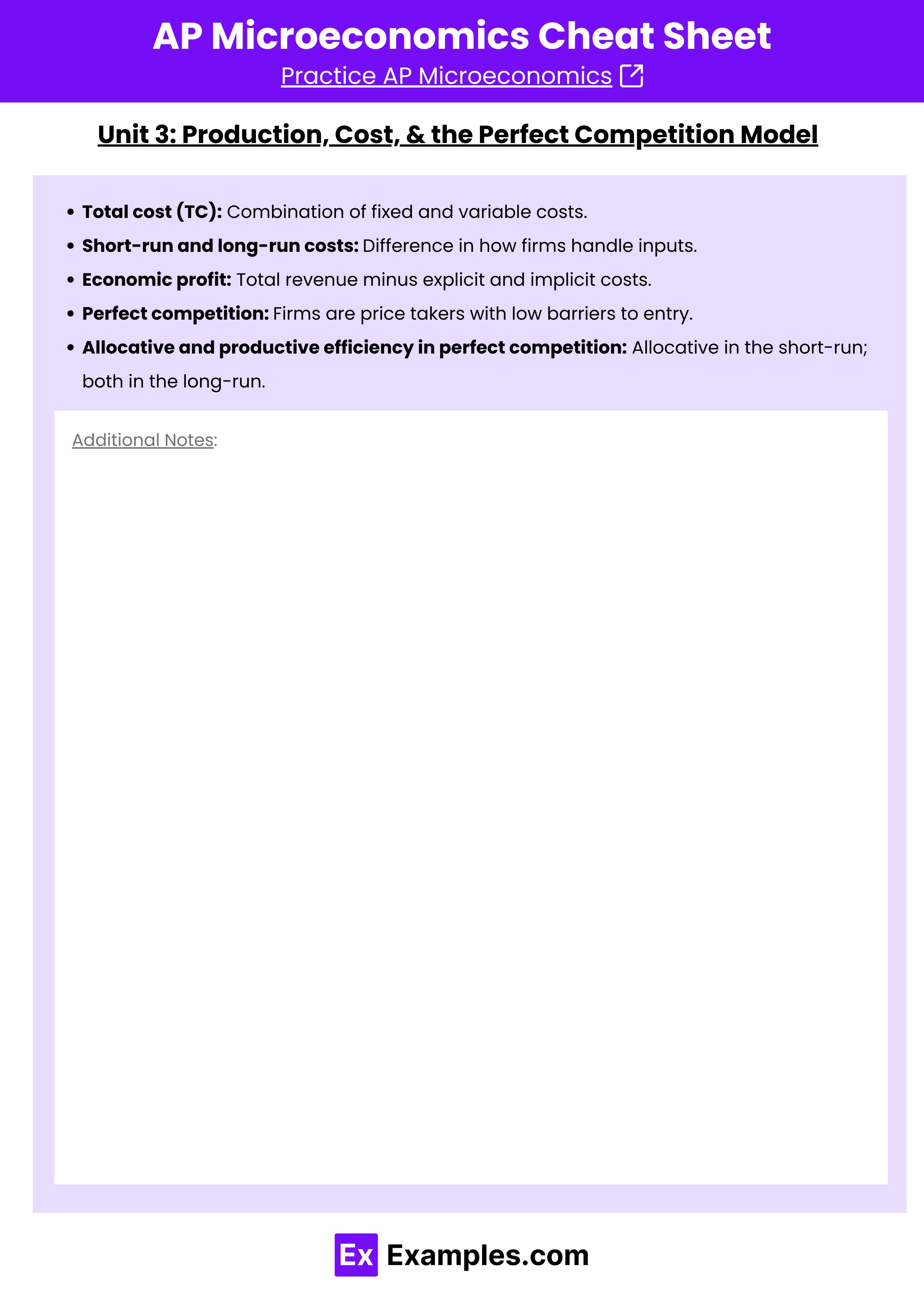
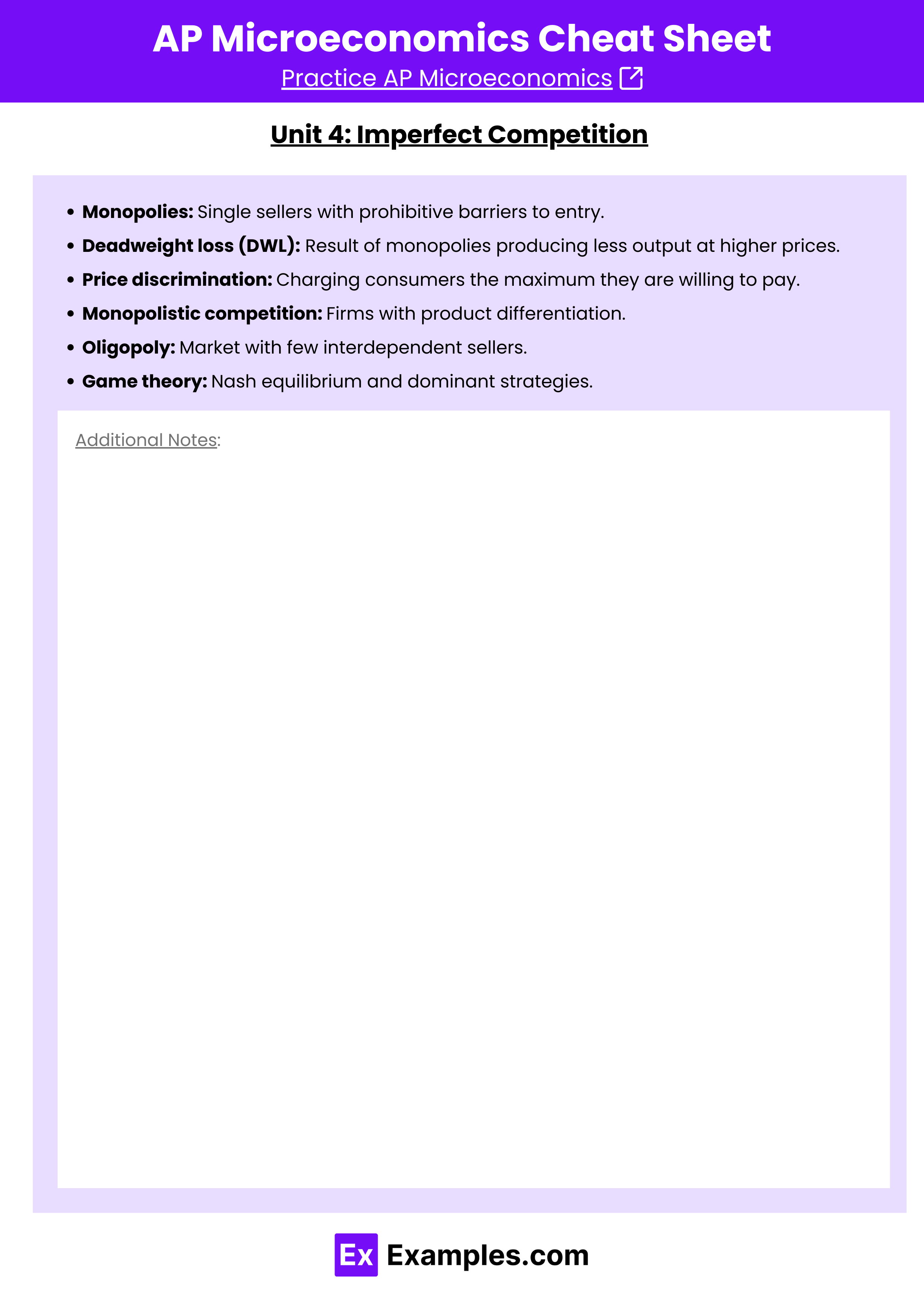
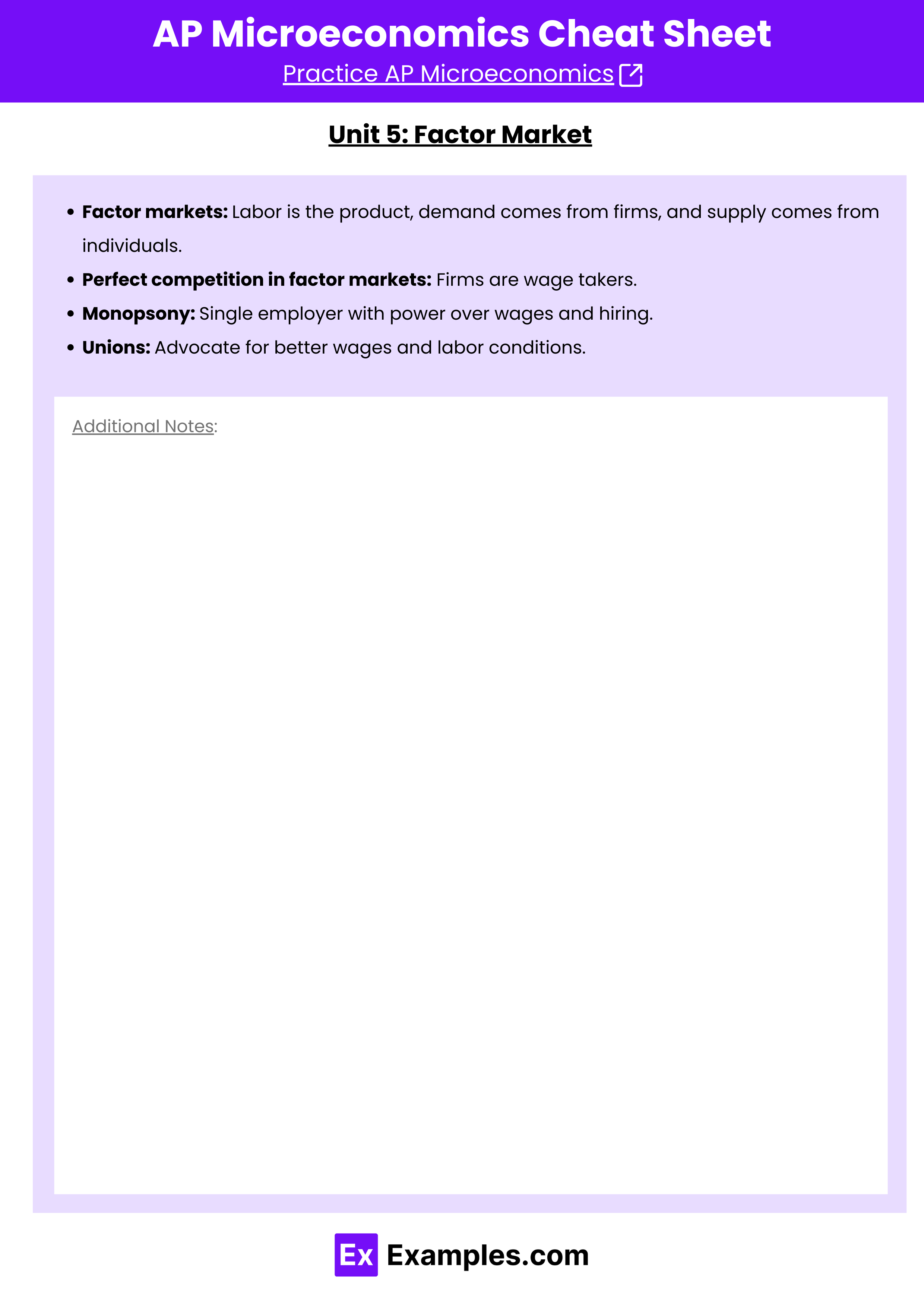
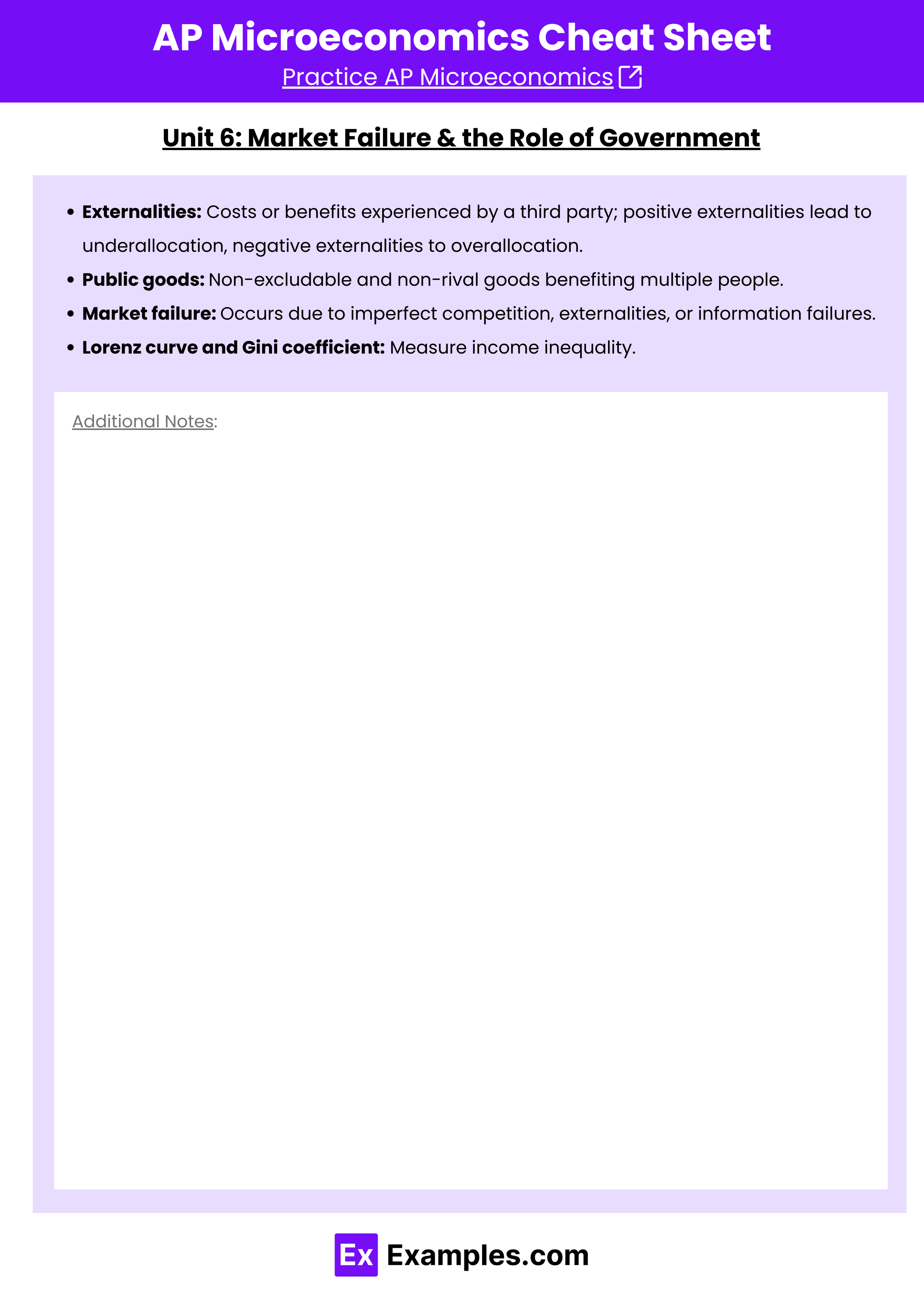
Download AP Microeconomics Cheat sheet – Pdf
Unit 1: Basic Economic Concepts
- Scarce resources: Limited supply vs. unlimited demand.
- Factors of production: Land, labor, capital, and entrepreneurship.
- Opportunity cost (OC): The value of the next best alternative.
- Efficiency: Producing maximum goods with minimal resources.
- Economic systems: Free market vs. command economy.
- Comparative advantage: Producing a good at a lower OC than others.
- Absolute advantage: Producing more of a good using the same resources.
- Law of diminishing returns: More resources lead to diminishing utility over time.
Unit 2: Supply & Demand
- Law of demand: As price increases, quantity demanded decreases.
- Law of supply: As price increases, quantity supplied increases.
- Market equilibrium: Occurs when quantity demanded equals quantity supplied.
- Price elasticity of demand (PED): Sensitivity of demand to price changes.
- Price elasticity of supply (PES): Sensitivity of supply to price changes.
- Income elasticity of demand (IED) and cross-price elasticity of demand (XED): Identifies normal/inferior goods and complements/substitutes.
- Price floors and ceilings: Government-imposed limits on market prices.
- Consumer and producer surplus: Benefits to consumers and producers at equilibrium.
Unit 3: Production, Cost, & the Perfect Competition Model
- Total cost (TC): Combination of fixed and variable costs.
- Short-run and long-run costs: Difference in how firms handle inputs.
- Economic profit: Total revenue minus explicit and implicit costs.
- Perfect competition: Firms are price takers with low barriers to entry.
- Allocative and productive efficiency in perfect competition: Allocative in the short-run; both in the long-run.
Unit 4: Imperfect Competition
- Monopolies: Single sellers with prohibitive barriers to entry.
- Deadweight loss (DWL): Result of monopolies producing less output at higher prices.
- Price discrimination: Charging consumers the maximum they are willing to pay.
- Monopolistic competition: Firms with product differentiation.
- Oligopoly: Market with few interdependent sellers.
- Game theory: Nash equilibrium and dominant strategies.
Unit 5: Factor Markets
- Factor markets: Labor is the product, demand comes from firms, and supply comes from individuals.
- Perfect competition in factor markets: Firms are wage takers.
- Monopsony: Single employer with power over wages and hiring.
- Unions: Advocate for better wages and labor conditions.
Unit 6: Market Failure & the Role of Government
- Externalities: Indirect costs or benefits to third parties.
- Positive externalities lead to under allocation, solved with subsidies.
- Negative externalities lead to overallocation, solved with taxes or quotas.
- Public goods: Nonexcludable and nonrival goods.
- Market failure: Inefficient resource allocation due to externalities or imperfect competition.
- Lorenz curve and Gini coefficient: Measures income inequality.

